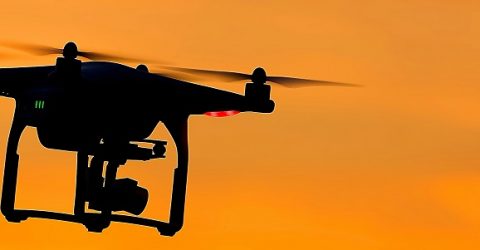Drones could be delivering tomorrow’s broadband
Connecting through flying robots might sound like sci-fi, but it’s closer to reality thanks to recent experiments

Twenty years ago, a suggestion that home broadband could be provided by unmanned aircraft would have seemed like a science fiction trope.
Yet sci-fi is often frighteningly prescient.
Consider 3D printers, smart watches, autonomous vehicles and Bluetooth-style technology. All depicted decades ago in films and TV series, and all now in the real world.
Broadband from drones may be about to enter the real world as well, with concerted efforts to marry these two burgeoning technologies.
One up, one down
Facebook has abandoned its high-profile Aquila project, which aimed to distribute broadband using high-altitude drones as wide as a Boeing 737.
However, another super-wide drone recently took to American skies, flying at 62,500 feet while beaming down high-speed data to a test centre.
This joint venture between Japanese startup HAPSMobile and Google’s parent company Alphabet saw the 262-foot drone comfortably supporting low-latency video calls.
It reflects a growing belief that unmanned aerial vehicles (UAVs) could provide connectivity in parts of the world where traditional infrastructure simply isn’t present.
MoreWhat is the ‘splinternet of things’?
Some UK telecommunications networks date back to the Victorian era, but developing nations often lack this legacy of ground-based infrastructure.
Even affluent countries have remote regions where installing fibre cabling is prohibitively expensive. That’s why the Government’s 2025 gigabit broadband pledge has been dropped.
Broadband from drones could be a far cheaper and more accessible option for consumers. But how does this technology work?
Here come the drones
High above the clouds, internet drones are propelled by battery-powered electric motors. Their wings are covered in solar panels, recharging the batteries every day for night flying.
Beyond 60,000 feet, there’s relatively little gravitational pull or wind resistance, allowing a bank of low-power rotors to keep each drone airborne for months at a time.
In terms of connectivity, each drone is equipped with 4G or 5G broadcasting equipment.
This disperses data signals across wide tracts of land, regardless of their topography or obstacles that might block ground-based signals.
Similar technology is used to distribute data from satellites, though drones provide shorter round-trip journeys – latency can be as low as 19 milliseconds.
While satellite internet requires a dish pointing at the sky, broadband from drones necessitates an externally-mounted antenna capable of receiving data streams.
The optimal frequencies for this communication remain hotly contested. Microwave bands offer limited capacity, but millimetre bands are more affected by bad weather.
The delivery vectors are also being keenly debated.
While Alphabet was closely involved in HAPSMobile’s drone experiment, it’s also been testing hot air balloons.
Polyethylene balloons are far lighter than drones, though they’re less responsive. On the positive side, both are far cheaper to manufacture, launch and maintain than satellites.
Today’s internet balloons can stay in the air for five months, but efforts are underway to double this ahead of any commercial rollout.
Once a balloon or drone can provide a year of reliable service, it’s easy to imagine this being offered as an alternative to fibre cabling in underdeveloped or remote regions of the world.






